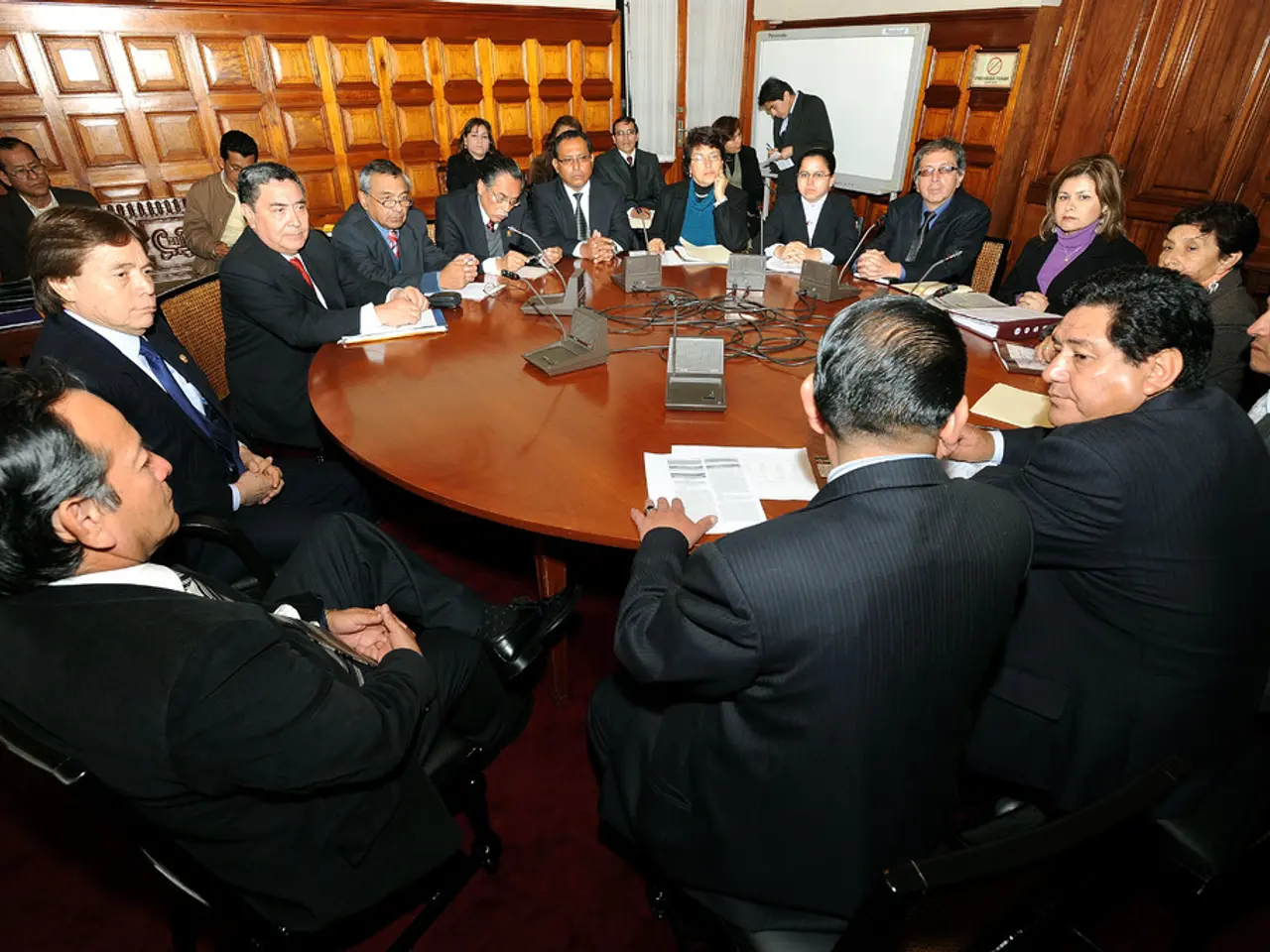Trump's tariffs accused by Fed Chair Jerome Powell for slowing down interest rate reductions
In a complex and evolving economic landscape, Federal Reserve Chair Jerome Powell has been steering the central bank through the challenges posed by the ongoing trade war between the US and other countries.
The latest employment data for June is set to be revealed next week, providing fresh insights into the economic impact of the trade tensions. However, the Fed's approach to interest rates has already been significantly influenced by the trade war, particularly during Powell's tenure.
In June 2025, for instance, the Fed kept its key rate steady at 4.25% to 4.5%, citing concerns that tariffs enacted under former President Donald Trump could push inflation higher by increasing costs passed on to consumers. Despite some signs of cooling inflation as of May 2025, Fed officials remained wary that tariffs could reignite inflation pressures in the second half of the year, discouraging immediate rate cuts.
This cautious stance led the Fed to delay cutting rates despite rising recession risks associated with trade tensions and their economic effects. The Fed's projections still included expected rate cuts (two quarter-point reductions in 2025), but the timing and aggressiveness of cuts have been tempered by trade-related uncertainty and inflation concerns stemming from tariffs.
The looming threat of a global trade war has slowed down plans to slash the key rate of borrowing. The Fed's decision-making process has become a delicate balancing act, weighing the risk of inflation from tariffs against economic slowdown risks.
As the trade war continues, the Fed's next meeting is scheduled for July 29-30. Powell has reiterated the central bank's plans to "wait and learn more" about the impact of tariffs on inflation before lowering interest rates. He has also emphasised that the Fed's decision on interest rates will depend on the evolving data, and no meeting is definitively off the table.
The trade war has not only affected the Fed's interest rate decisions but has also strained relations between Powell and President Trump. Trump has repeatedly criticised Powell, going as far as to send him a handwritten note arguing for lower interest rates. However, Powell has expressed his desire to leave the economy in good shape before his term ends in May 2026.
Speculation suggests that Trump may announce Powell's successor within weeks, potentially making him a 'shadow' Fed chair. Regardless, Powell has noted that he has just over 10 months left as chair, with his term ending in May 2026. After that, he could remain on the Fed's board through 2028, but he typically steps down from the institution after his term as chair ends.
The markets' response to Powell's comments illustrates the challenges the Fed faces in balancing geopolitical risks and conflicting data. Investors initially increased the estimated probability of a July rate cut after Powell's comments, but then decreased it again after stronger-than-expected data on US job openings.
New inflation data will be released in a few weeks, while the deadline for possible imposition of higher global tariffs is July 9. As the trade war continues to unfold, the Federal Reserve will continue to navigate this complex environment, striving to maintain a stable economy while responding to the evolving data and geopolitical risks.
- The Fed's interest rate decisions have been significantly influenced by the trade war, with the media covering the implications extensively as part of general-news reporting.
- The ongoing trade war has affected not only the Fed's interest rate decisions but also the relationship between Powell and President Trump, which has been a subject of political discussion.
- The cautious stance taken by the Fed, due to the trade war, has been a topic of interest in the business community, as it has slowed down plans to slash the key rate of borrowing.
- As the trade war continues, the debate over inflation, economic slowdown risks, and the Fed's future interest rate decisions has expanded into broader discussions about monetary policy and finance.





